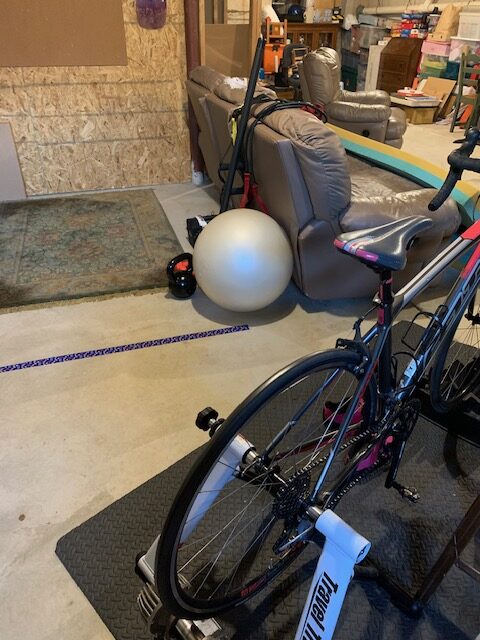Strength training is an excellent addition to any endurance athlete’s training, but with many gyms closed, it can be difficult to figure out an alternative.
I love lifting heavy things. I’ve been doing it for longer than I’ve been racing endurance sports and it’s a great compliment to my triathlon training. So, every winter, I increase my time in the weight room to prepare myself for the upcoming season. This year was no different as I started training for an early-season half Ironman, but everything was completely derailed by the coronavirus pandemic. Gyms closed abruptly and we were confined to our houses, but I was determined to maintain all my hard-earned strength.

The first order of business was to adjust my expectations. In a normal training cycle, I would lift through the winter and spring to build strength, then shift to a maintenance mode once racing began. When everything shut down, I was about 4-6 weeks from peak strength. I knew I would not be able to build any more strength without a fully stocked weight room, so I shifted my focus from gaining strength to maintaining strength and working on muscular imbalances. This second part is vitally important for me absent a chance to complete my strength-building cycle, while increasing my run volume. Running is rough on my body, and without swimming to provide a break and a chance to recover, there is a high likelihood I will develop some sort of overuse injury. To combat this possibility, I concentrated on “prehab” exercises that strengthened smaller supporting muscles in my lower body. When the smaller muscles are strong, the larger muscles can do their primary job and not multiple ones.

Once I had new goals, the next challenge was to put together a program that creatively used what I had in my basement:

Small aside—you do not need lots of fancy weights and equipment for a quality strength workout. Body weight exercises like squats and pushups will do the trick. If you need to add weight, grab whatever you have in the house: cans, milk jugs, a bag of pet food (the big ones are typically 30-50lbs), or even a family member (two or four legged)!
Now that I had everything in place, the only thing missing was my motivation. I gave myself lots of grace at the start of stay-at-home, but it quickly became obvious that with weight training, as in endurance training, consistency is key. Once I figured where to slot in strength (directly after a bike or a run worked best for me), sticking with it became much easier. You can start where you are, use what you have, and give it a try!

Sample full-body workout:
- Two sets, 12 reps of each exercise with 45 seconds of rest in between
- Kettlebell goblet squat
- Dumbbell Partial getup
- Swiss ball pass
- Dumbbell front and lateral shoulder raise
- Single-leg Romanian deadlift
- Dumbbell bent-over row
- Shoulder bridge plus chest press
- Lateral lunge plus upright row
- Swiss ball crunch
- Partial DB Getup

Sample supporting muscle workout (lower body):
- Two sets, 20 reps
- Banded monster walk
- Side-lying leg lift
- Clamshells
- Banded glute bridge
- Banded hip thrust
- Donkey kicks
- Fire hydrants
- Side plank with hip dip
- Banded Hip thrust




